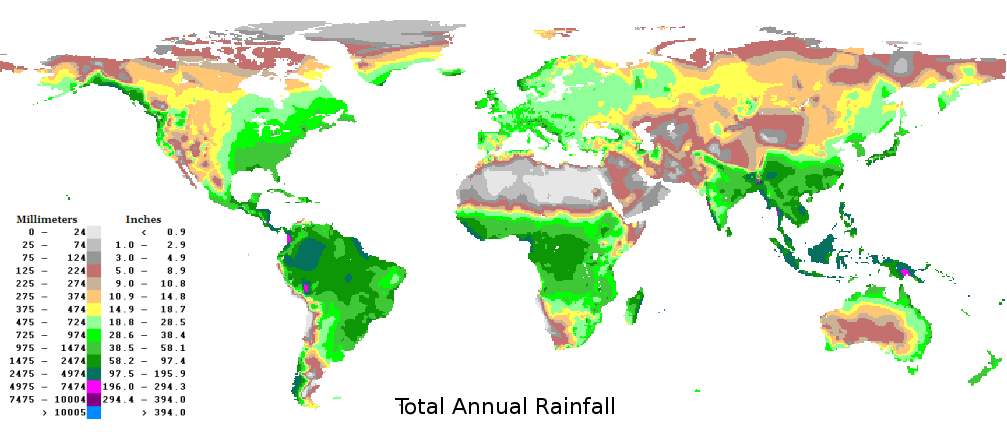Get up early tomorrow for the Morning Planet Show
- Read more about Get up early tomorrow for the Morning Planet Show
- Log in or register to post comments
Both the quote, and the Peter Nicholson![]() cartoon below were found at one of my very favorite sites,
cartoon below were found at one of my very favorite sites, ![]() Jesse's Cafe' Americain.
Jesse's Cafe' Americain.
If you are tired of being cannon fodder for the banks and a corrupt government, and are sincerely interested in knowing just what the hell is really happening in the world around you.
Not to mention what is being done to you specifically, Jesse has some answers.
It is not often an easy read, and you will be lost the first 7 or 10 times you pull up to this fine blog, as Jesse is a trader and like all traders, his world is monitored and then explained using all manner of charts, acronyms and shorthand phrases that you as a non trader won't readily understand.
What you need to grasp here, is that among those things that Jesse does for a living, is to trade his own account.
That is to say, he places his own money at risk either for or against some specific proposition, commodity, stock ... whatever.
The power here resides in the phrase "his own money".
You can trust me on this one when I tell you that when it's your own money, your thinking gets way sharper.
Way Sharper.
It is my sincere hope that you will spend three minutes or so a day with Jesse in the hope that you may avoid some or all of the ass kicking heading in our general direction.
This thing is far from over.
And please try to keep in mind what has happened over the past ten years.
I am utterly amazed that the US has just passed through one of the greatest financial scandals and frauds in history, and within two or three years is willing to act as though nothing had happened, that it was just some random act of God, and that everything is back to a 'new normal' again.
Few prosecutions and shallow reforms.
Remarkable.

This story has been flying around all day.
I've read three different versions of it.
As you might well expect the best, which is to say clearest and easiest to understand comes from NASA.
As always click the drawing to read the entire piece.
Be smarter than your friends.
Einstein was right again. There is a space-time vortex around Earth, and its shape precisely matches the predictions of Einstein's theory of gravity.
Researchers confirmed these points at a press conference today at NASA headquarters where they announced the long-awaited results of Gravity Probe B (GP-B).
"The space-time around Earth appears to be distorted just as general relativity predicts," says Stanford University physicist Francis Everitt, principal investigator of the Gravity Probe B mission.
Time and space, according to Einstein's theories of relativity, are woven together, forming a four-dimensional fabric called "space-time." The mass of Earth dimples this fabric, much like a heavy person sitting in the middle of a trampoline. Gravity, says Einstein, is simply the motion of objects following the curvaceous lines of the dimple.
From The Stockholm International Peace Research Institute![]() .
.
As always, click on the graph below for the entire press release which contains links to the paper.
World military expenditure in 2010 is estimated to have been $1630 billion, an increase of 1.3 per cent in real terms.* The region with the largest increase in military spending was South America, with a 5.8 per cent increase, reaching a total of $63.3 billion, according to new data published today by Stockholm International Peace Research Institute (SIPRI)
The United States still exceptional in military spending
Although the rate of increase in US military spending slowed in 2010—to 2.8 per cent compared to an annual average increase of 7.4 per cent between 2001 and 2009, the global increase in 2010 is almost entirely down to the United States, which accounted for $19.6 billion of the $20.6 billion global increase.
‘The USA has increased its military spending by 81 per cent since 2001, and now accounts for 43 per cent of the global total, six times its nearest rival China. At 4.8 per cent of GDP, US military spending in 2010 represents the largest economic burden outside the Middle East’, states Dr Sam Perlo-Freeman, Head of the SIPRI Military Expenditure Project.
Wanna know why some of these countries just flat can't get it together when it comes to creating a democratic society?
Just what the hell is their problem?
Is it culture?
Genetics?
Theology?
What?
The following is the opening paragraph from a paper by Stephen Haber and Victor A. Menaldo titled Rainfall, Human Capital and Democracy.
The map comes from World Climate Maps![]() .
.
The entire 59 page paper which by the way I read (I would not lie ..... about reading) can be accessed here![]() .
.
You have to fool around joining up and stuff, but it's free and seemingly spam free.
Why are some societies characterized by enduring democracy while other societies are persistently autocratic?
We show that there is a systematic, non-linear relationship between rainfall levels and regime types in the post-World War II world:
stable democracies overwhelmingly cluster in a band of moderate rainfall (550 to 1300 mm of precipitation per year); persistent autocracies overwhelmingly cluster in deserts and semi-arid environments (0 to 550 mm per year) and in the tropics (above 1300 mm per year).

We also show that rainfall does not work on regime types directly, but does so through the its impact on the level and distribution of human capital. Specifically, crops that are both easily storable and exhibit modest economies of scale in production grow well under moderate amounts of rainfall.
The modal production unit is a family farm that can accumulate surpluses. In such an economy there are incentives to make intergenerational investments in human capital. A high level and broad distribution of human capital makes democratic consolidation more likely.
Here are some excerpts from the paper.
Briefly stated, the world’s liberal democracies are situated in climate zones where the level of rainfall permitted the advent of an agricultural system based on grains and legumes, which are characterized both by a high degree of storability and modest economies of scale in production.
Conversely, high storability and small minimum efficient scales of production do not characterize the crops that can be grown in other climate zones. In deserts, it is not possible to grow anything, except under special circumstances that dramatically raise the scale of production—a subject to which we shall return at some length.
It is, of course, possible to grow food in the tropics—but what can be grown either has very low degrees of storability (e.g. tree crops, such as bananas) or is characterized by extremely large scale economies in production (e.g. sugar cane).
Those specific features of grains and legumes created conditions that favored societies composed of family farmers, as opposed to societies composed of nomadic Bedouins or coerced plantation workers.
High storability and small minimum efficient scales of production generated surpluses that could not be arrogated by political elites bent on political centralization. This structure of agricultural production therefore created incentives for economic specialization, trade, and inter-generational investments in human capital.
Indeed, the first democracies—both in antiquity and in the modern era—were not only located in this band of moderate rainfall, but they emerged out of societies composed of citizens who not only had attained high average levels of education but who were relatively equally matched in terms of their educational endowment and sophistication.
Colonial New England is, of course, the archetype: a society of highly literate, family farmers.
What was true about New England was also true, however, about Ancient Athens, 17th Century Holland, 18th Century England, and 19th Century Canada.
We've been all over the place looking for serious analysis that we could understand (the catch) concerning the Fukushima nuclear power plant.
The best thing out there at the moment is a letter from Dr, Josef Oehmen who is billed as a research scientist at MIT, to the family of a blogger who has emigrated to Japan.
That letter can be found here at Morgsatlarge-blogeriffic![]() and again at
and again at ![]() Bravenewclimate.com with some additional diagrams which are nice to look at.
Bravenewclimate.com with some additional diagrams which are nice to look at.
There is some more reasonably easy analysis to be found at World Nuclear News ![]() back there.
back there.
News Daily provides some "for Dummies" analysis and comparisons between Fukushima, Three Mile Island and Chernobyl.
The photo will link you up.
With regards to the Three Mile Island core meltdown.
Click on the Nuclear Regulatory Commission's logo below for their "Backgrounder" on the event and it's outcomes.
Not very long.
Pretty easy to skim for gist.
The only funny thing here is that sooner or later everyone takes a shot at the Russians.
Ken Ring at PredictWeather.com![]() who claims over 5000 subscribers including farmers, corporations and government agencies, uses in his own words, "trends and cycles of Moon orbits to predict the weather", scored some notoriety lately for having tweeted a Valentine's Day prediction for a Christchurch, New Zealand earthquake between February 15 and 25.
who claims over 5000 subscribers including farmers, corporations and government agencies, uses in his own words, "trends and cycles of Moon orbits to predict the weather", scored some notoriety lately for having tweeted a Valentine's Day prediction for a Christchurch, New Zealand earthquake between February 15 and 25.
Damn that was a convoluted sentence.
Be reminded here of the devastating magnitude 6.3 earthquake the hit Christchurch February 21, 2011.
In an article at his site titled ![]() The Ethics of Warning, in which Mr. Ring defends himself and his predictions from charges of fear mongering and pseudo science, he writes the following:
The Ethics of Warning, in which Mr. Ring defends himself and his predictions from charges of fear mongering and pseudo science, he writes the following:
Earthquakes correlate with kingtides - they are a function of the kingtide in the land deep under the ground.
The whole 2/3 of the planet that is beneath the Earth's surface has a moving egg-shaped bulge that, as the earth daily rotates, is always pointing to the moon, just as when a magnet is moved above a plate of iron filings and the area under the magnet is always more responsive.
The perigee (day that the moon is closest to earth each month) is in control of the timing of the kingtide. Sometimes new moon accompanies perigee (as on 4 Sept 2010), sometmes full moon (22 Feb 2011), so kingtide occurs around these dates as well.
Before new year kingtide days were new moon-related. From February onwards full moon has accompanied perigee, so kingtides were full moon-related.
It does not mean all full moons (or new moons) bring the biggest earthquakes.
Perigee (closest approach to the Earth) is also a factor.
I can find no other use of the phrase kingtide anywhere (I know you believe me when I say that I looked) that correlates in any way to Mr. Rings.
He predicts an second earthquake March 20, 2011 in Christchurch based on the astronomy of that day, namely the ![]() "Supermoon" on March 19, and the Jupiter, Saturn opposition which is exact on March 28, 2011, but is within a few degrees from mid March until mid April 2011.
"Supermoon" on March 19, and the Jupiter, Saturn opposition which is exact on March 28, 2011, but is within a few degrees from mid March until mid April 2011.
Click on the below sketch of the Jupiter, Saturn opposition for a radically different way to look at both the world and the universe around you.
Remembering as always ..... head ..... swivel.